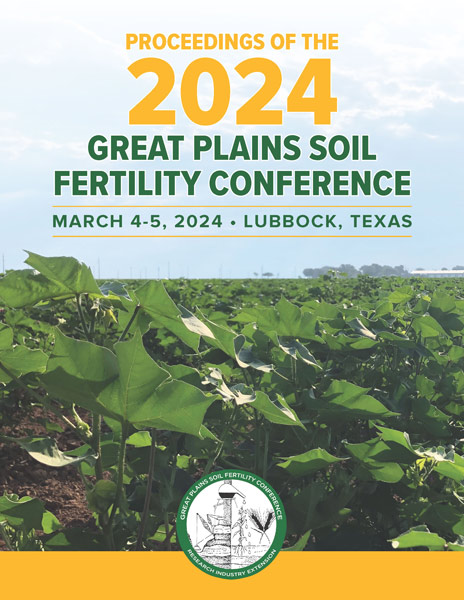Conference Proceedings Available!
The 2024 Great Plains Soil Fertility Conference Proceedings Book is now available! Click the link below to view the full document!
Proceedings
Authors
| Filter results1 paper(s) found. |
|---|
1. Nitrogen and Sulfur Colimitation to Winter Wheat YieldSulfur has become more limiting for wheat production in the Great Plains, and its deficiency can interact with N availability. The current work reports on yield and yield gaps of three winter wheat varieties as affected by N and S fertilization using the concept of co-limitation (CNS). Field studies evaluating 0, 10, 20 and 40 lbs S/a combined factorials with 50, 100, and 150 lbs N/ac and three hard red winter wheat varieties were conducted in eight environments resulting from the... R. Lollato, B.R. Jaenich, N. Nelson, M. Guttieri, D. Ruiz diaz, V. Sadras |
